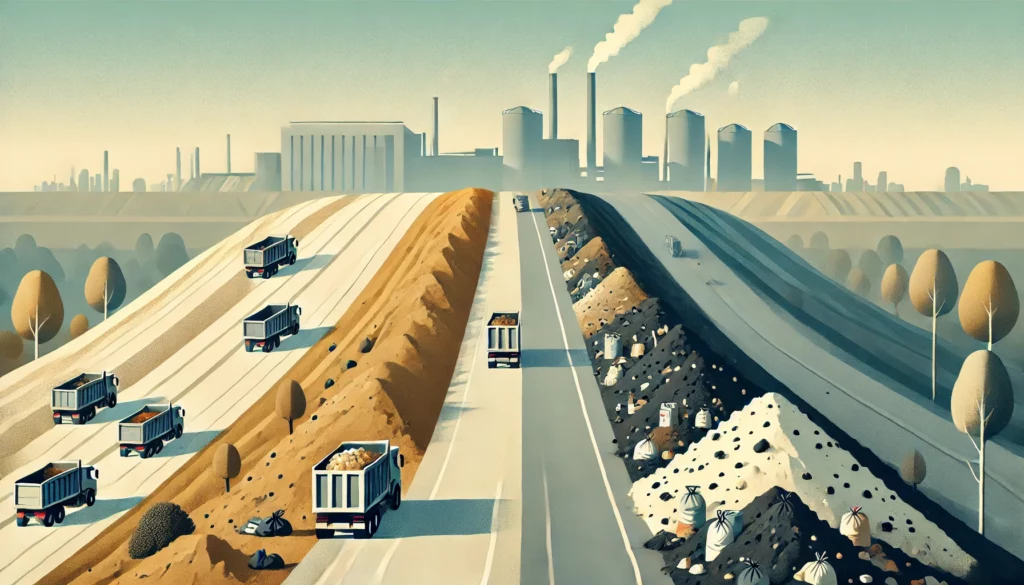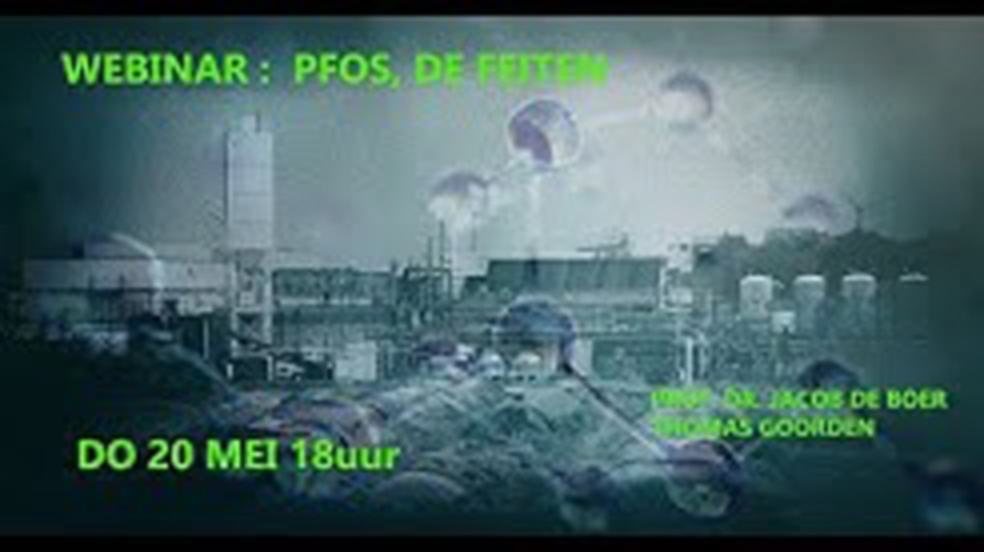04.02.2025 | Grondrecht
Onvoldoende capaciteit op stortplaatsen, dus wil 3M vervuilde PFOS-grond in bermen
In Zwijndrecht start dit jaar de sanering van tuinen, akkers en weilanden die vervuild zijn met PFOS. Het blijft onduidelijk waar de meer dan 500.000 ton vervuilde grond zal terechtkomen. “Blaas deze sanering af tot er een échte oplossing is.”
Alleen nog een tijdelijke brug bouwen over de snelweg E34 en dan kan het chemiebedrijf 3M in Zwijndrecht van start gaan met de langverwachte sanering van honderden tuinen, maar ook akkers, weilanden en boomgaarden die de voorbije decennia vanuit zijn fabriek vervuild werden met PFOS. De chemische stof behoort tot de bredere groep van PFAS, die ‘eeuwige chemicaliën’ worden genoemd omdat ze heel moeilijk afbreekbaar zijn. Bij de bodemsanering, die later dit jaar moet starten en “ruwweg drie tot vier jaar” zou duren, zal meer dan 500.000 ton, of 300.000 kubieke meter vervuilde grond weggegraven worden.
De Vlaamse afvalstoffenmaatschappij Ovam keurde recent het saneringsproject goed dat 3M heeft ingediend. Daarin staan heel wat “belangrijke randbemerkingen”, die de looptijd van de sanering kunnen verlengen. Aan de basis ligt vooral de prangende vraag waar een half miljoen ton vervuilde grond heen moet.
De meest gewenste piste, waar de Europese regelgeving over gevaarlijke chemische stoffen ook op aandringt, is om de PFOS volledig te doen verdwijnen. Dat kan door grond op extreem hoge temperaturen te verbranden, of “fysisch-chemisch te wassen”. Dat gebeurde in het verleden ook al met vervuilde grond afkomstig van de Opel-site in de Antwerpse haven. Maar de technieken staan nog in hun kinderschoenen. Door de textuur van de grond in Zwijndrecht, staat in de plannen van 3M, komt de overgrote meerderheid ervan niet in aanmerking voor zo’n sanering.
Grote druk op stortplaatsen
Daarom gaat de Ovam ermee akkoord dat 3M nagenoeg alle vervuilde grond zal storten op daarvoor voorziene plaatsen, zoals dat met afval gebeurt. Maar ook die uitweg botst op zijn limieten, door de omvang van de operatie in Zwijndrecht. “Uit overlegmomenten met de uitbaters en eigenaars van stortplaatsen, blijkt dat er weinig tot geen mogelijkheid is voor het bergen van dergelijke volumes”, klinkt het. De stortplaatsen in Vlaanderen staan vandaag onder grote druk, onder meer door de Oosterweelwerken, waarbij nog grotere volumes vervuilde grond afgegraven en gestort worden.
Daarom schuift 3M “mogelijke optimalisaties” naar voor. De eerste is “het verbeteren van de grondwastechnieken”, zodat grotere hoeveelheden grond daarvoor in aanmerking komen. Er wordt een proefproject gestart. De tweede piste die 3M oppert, is die van engineered solutions. Dat betekent: vervuilde grond gebruiken “voor de aanleg van bermen, dijklichamen, ophogingen en dergelijke meer, op een zodanige manier dat zij geen risico inhouden naar de omgeving toe en naar het grondwater”. Concreet denkt 3M aan een “verlenging” van een geluidsberm, aangelegd voor de Oosterweelwerken.
Advocate omgevingsrecht Isabelle Larmuseau noemt die plannen “flagrant in strijd” met de Europese regelgeving over omgang met gevaarlijke stoffen. “Chemische stoffen zoals PFOS zijn enorm bedreigend voor mens en milieu”, zegt ze. “Alleen een volledige vernietiging ervan kan garanderen dat ze niet verschuiven naar elders in het milieu – en dan denk ik allereerst aan het grondwater. Daarom is hergebruik totaal verboden.”
Volgende generaties
Ook Grondrecht, een burgercollectief dat groeide rond de Zwijndrechtse PFOS-vervuiling, zegt dat vervuilde grond in bermen opslaan “geen optie zou mogen zijn”. “Dan spreek je eigenlijk niet van een sanering, maar van een verplaatsing van het probleem naar de volgende generaties”, zegt Toon Penen. De Ovam betwist dat. Volgens de afvalstoffenmaatschappij is het hergebruik van (licht) vervuilde grond in onder meer bermen wel degelijk veilig en legitiem. Zo is het ook vastgelegd in het zogenoemde tijdelijk handelingskader PFAS, dat vandaag de omgang met de “eeuwige” chemische stoffen in Vlaanderen bepaalt.
De auditeur van de Raad van State adviseerde recent om dat tijdelijk handelingskader te vernietigen. De gehanteerde normen zouden te laks zijn met oog op de gezondheidsrisico’s. Een arrest wordt in juni verwacht. Larmuseau stelt zich in dat licht de vraag of de sanering op dit moment wel aangewezen is. “De dadendrang die is losgebarsten na de uitbraak van de PFOS-crisis dreigt naar suboptimale, volgens mij zelfs illegale, oplossingen te leiden, die elders een ander type milieuschade dreigen te veroorzaken”, zegt ze. “Dan blijft de grond nog beter waar hij is. Blaas deze sanering af, tot er een échte oplossing voorhanden is.”
Volgens de Ovam zou uitstel “tot de ideale saneringsmethode gevonden is” dan weer betekenen dat “omwonenden en het milieu langer aan PFAS worden blootgesteld, en de saneringsplichtige (3M, red.) de dans ontspringt”.



